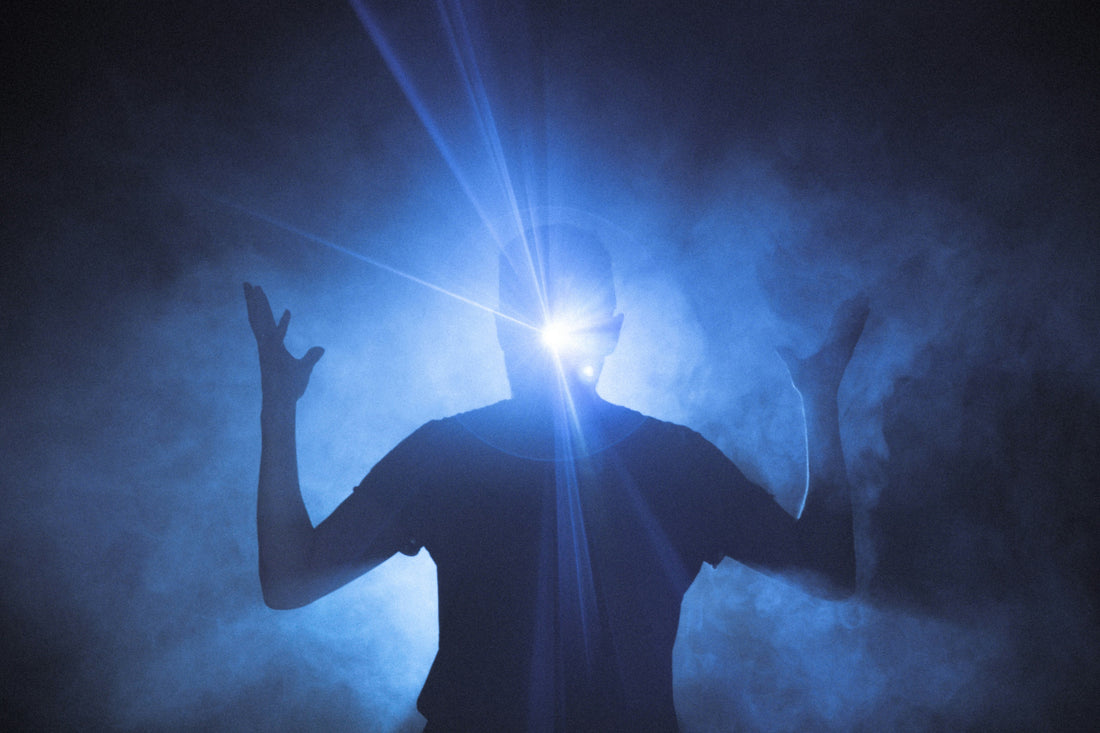
What Are Theatre Projection Backdrops, and How Do They Work?
Once upon a time, if you wanted to create a new location on stage, you had to haul in painted flats, roll in a heavy set piece, or (if you were feeling fancy) fly in a cloth backdrop. These days? A click of a button will do the trick.
Projection has been used in theatre for over 50 years, but it wasn’t until the early 2000s, with the arrival of affordable digital projectors that things really took off. Gone are the days of fiddling with dusty slide projectors and hoping your carousel doesn’t jam mid-show. Now, with tools like PowerPoint (yes, really) and QLab (the real MVP), shifting from one scene to another is smooth, dynamic, and far less likely to involve someone crawling into the rafters.
And it's not just projectors doing the heavy lifting. In professional theatre, LED walls have entered the chat. These high-tech backdrops are brighter, clearer, and immune to a common nemesis of projection: actor shadows. As prices drop and technology becomes more accessible, LED walls may well become standard gear in theatres, slowly replacing the trusty old cyclorama.
But before we get ahead of ourselves, let’s go back to basics.
How Does Theatre Projection Work?
In simple terms, projection in theatre involves a digital projector beaming an image onto a surface, usually the back wall of the stage or a screen (commonly a cyclorama). The projector is typically mounted in the lighting rig, at around the half stage point, and aimed precisely at the stage backdrop. A wide angle lens can be used allowing the projector to be closer to the screen and mitigate warping of the final image.
Instead of building multiple physical sets, you create digital images for each location in your show, whether it’s a French provincial village, a spooky forest, or the inside of a Victorian mansion. Cue the next scene? Click. New world.
It’s like scenic design meets Netflix: swipe left for the ballroom, swipe right for the dungeon.
Why Use Projection Instead of a Traditional Set?
The biggest advantage? Flexibility. You can change scenes instantly, avoid long transitions, and present complex visual storytelling without needing a battalion of backstage crew shifting flats in the dark. You can mount a large-scale musical on a shoestring budget and still make it look like Broadway.
Even better, these backdrops don’t have to be still. Want candles to flicker? Fireplaces to roar? Trees to sway gently in the wind like they’re in a shampoo ad? Animation brings your scene to life and adds atmosphere without extra props or set pieces.
And if realism isn’t your thing? No worries. Projections also allow for abstract, surreal, or stylised designs. You’re not limited by what can be physically built, you’re only limited by imagination (and, okay, maybe file size).
Challenges of Using Projection in Theatre
Projection is a fantastic tool, but it’s not without its quirks. Here are the most common hurdles and how to deal with them.
1. Shadows
Actors love to move. Unfortunately, if they move too far upstage (close to the screen), they’ll end up casting very dramatic, very unplanned shadows right across your carefully designed digital backdrop.
Yes, it can be used as an artistic choice. But unless you’re staging Peter Pan and those shadows are meant to have character arcs, it’s usually better to keep your cast slightly downstage.
Translation: you might lose a good chunk of your stage depth.
2. Light Spill
There’s a reason cinemas turn the lights off. Projection looks best in the dark. The image glows, colours pop, and your scenic design gets the attention it deserves.
Unfortunately, theatre doesn’t work like the movies. Those pesky actors insist on being seen, which means lighting them. And every time you add a stage light, you risk washing out your backdrop.
Light spill happens when stage lighting, especially from front-of-house or overhead positions, bounces off the stage floor or hits the screen directly, dulling your projection.
A good lighting designer will do their best to avoid this by using side lighting or carefully angled instruments, but there are limits. It becomes a balancing act between lighting your performers and protecting your visuals.
And just when you think you've won? Light finds a way (cue the Jurassic Park theme). Even without direct spill, ambient bounce from the stage floor can fade your backdrop like a sun-bleached shop window.
3. Brightness Battles
You might be thinking: “Let’s just get a brighter projector.” And yes, that helps. But here’s the thing, your average standard lighting rig can have 50+ fixtures. That’s 50 beams of light versus your single little projector. It’s not exactly a fair fight.
New laser projectors are getting brighter (and quieter, too), but they don’t come cheap. And even the brightest projector will struggle if your lighting design doesn’t play nice.
In short: the brighter your stage, the more powerful your projector needs to be and even then, it may not look as crisp as you hoped.
Is Projection Worth It?
Absolutely.
Projection isn’t just a tech gimmick, it’s a storytelling tool. It allows productions to be more flexible, more imaginative, and more immersive. And as technology continues to improve, it’s only going to become more accessible and powerful.
Used well, a projection backdrop can transform your stage, support your actors, and take your audience on a visual journey that rivals any physical set.
Whether you're a seasoned designer or a school drama teacher looking to add wow-factor to your next musical, theatre projection backdrops offer endless possibilities.





1 comment
Who knew how much went into a backdrop..we tend to focus on the acting
…which l course would be meaningless without the scene being set. Nice job on your first blog…you are a natural. Looking forward to reading and learning more